NEAR Shoemaker Stories
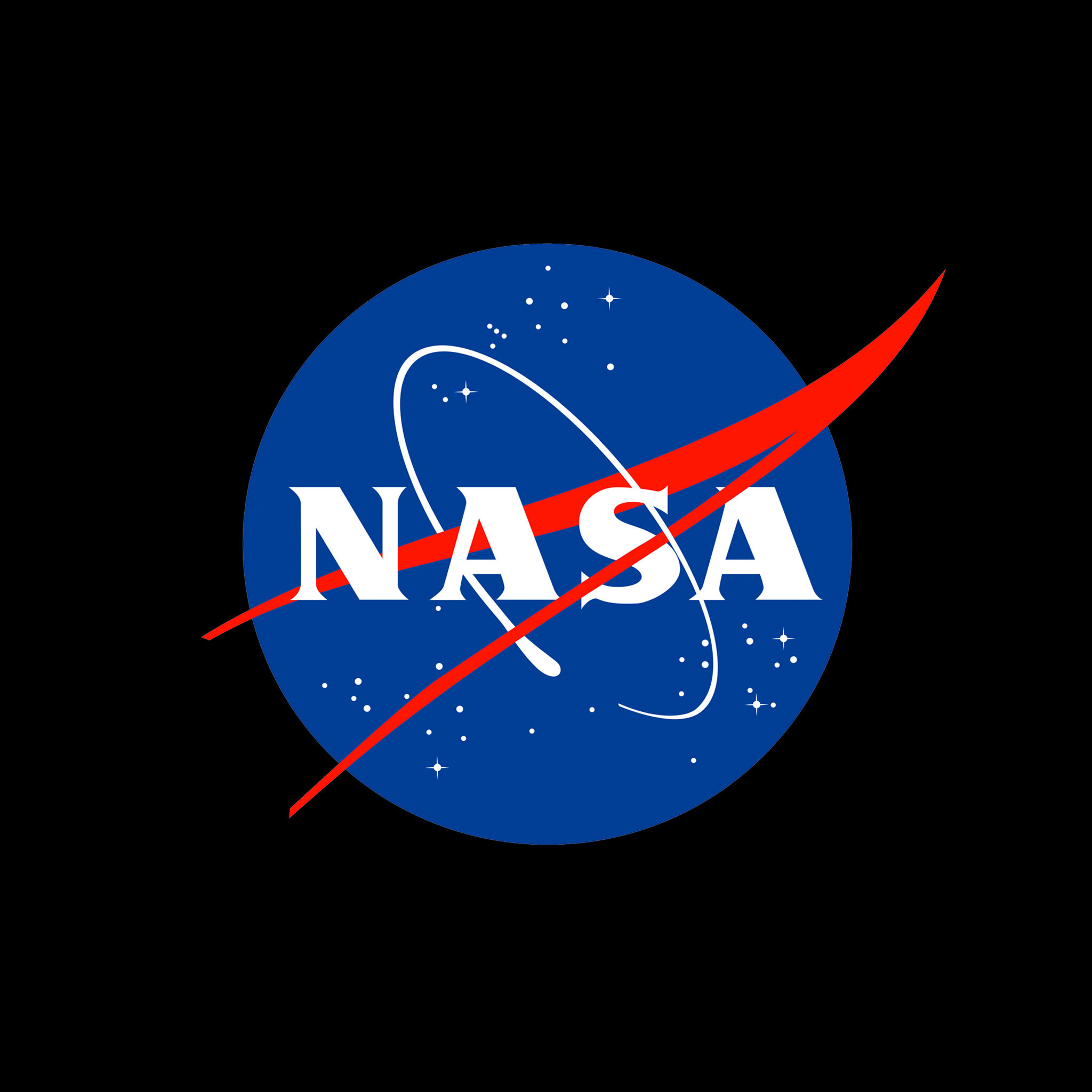
The first detailed global mapping of an asteroid - conducted as part of NASA's Near Earth Asteroid Rendezvous (NEAR) mission - has found that most of the larger rocks strewn across 433 Eros were ejected from a single crater in…
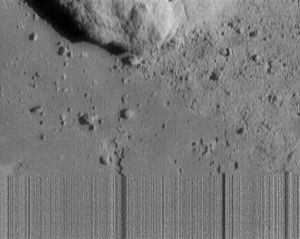
This image of asteroid 433 Eros, was the last received from NASA's NEAR Shoemaker. Streaky lines at the bottom indicate loss of signal as the spacecraft touched down on the asteroid during transmission of this image.
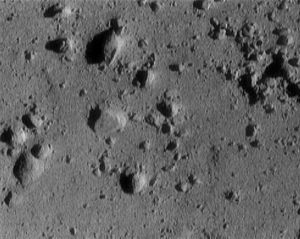
This image of asteroid 433 Eros, taken by NASA's NEAR Shoemaker shows a cluster of rocks at the upper right measuring 1.4 meters (5 feet) across.
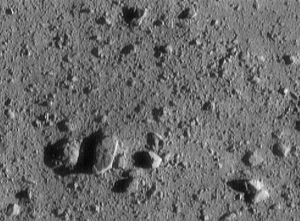
This image of asteroid 433 Eros, taken by NASA's NEAR Shoemaker shows a large, oblong rock casting a big shadow measures 7.4 meters (24 feet) across.
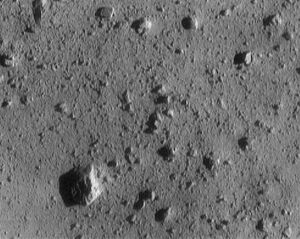
This image of asteroid 433 Eros, taken by NASA's NEAR Shoemaker shows a large rock at lower left on the surface.
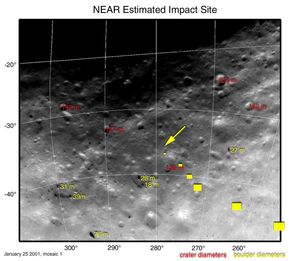
This mosaic made from images taken Jan. 25, 2001 by NASA's NEAR Shoemaker shows diameters of craters in red, and diameters of boulders are shown in yellow. A yellow arrow marks the estimated touchdown site.
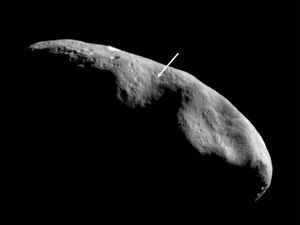
This image of peanut-shaped asteroid Eros, taken by NASA's NEAR Shoemaker on Dec. 3, 2000, shows the terminator (the imaginary line dividing day from night) which lies near the equator.
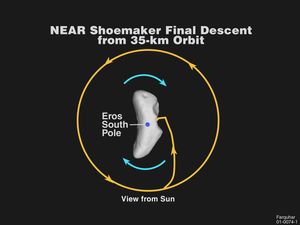
This plot shows NEAR Shoemaker's projected path from orbit to the surface of Eros on Feb. 12, 2001, providing the highest-resolution images ever taken of Eros' boulder-strewn, cratered terrain.
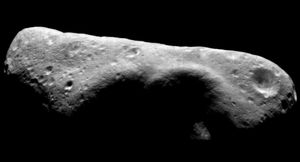
This image of peanut-shaped asteroid Eros, taken by NASA's NEAR Shoemaker on Nov. 30, 2000, shows the cratered terrain south of where the spacecraft touched down on February 12, 2001.
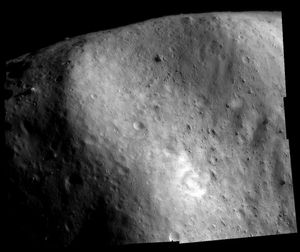
This image of asteroid Eros, taken by NASA's NEAR Shoemaker shows the boulder-filled, concave depression at the southwestern edge of the saddle-shaped Himeros.
























